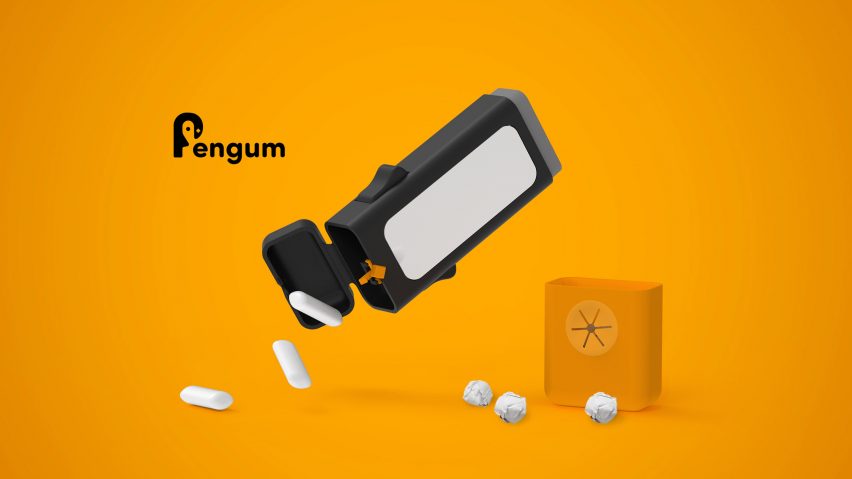
Design Institute of Australia spotlights eight award-winning student projects
Dezeen School Shows: a house informed by the playfulness of the game hide-and-seek and a textile collection that combines hand-manipulated and digital techniques are included in Dezeen's latest school show by students presented by the Design Institute of Australia.
Also included is a clothing collection designed to question sentimental value through mending and repair and a wooden umbrella stand comprising balancing disks.
Design Institute of Australia
Institution: Design Institute of Australia
Award: Graduates of the Year Awards 2022
School statement:
"Established in 1948, the Design Institute of Australia (DIA) is the national member body that champions the value of all design and the impact of Australian designers. Its purpose is to help designers prosper by providing knowledge, thought leadership, access and inclusivity.
"The Graduates of the Year programme, part of the Designers Australia Awards, has been mentoring students for almost two decades and was created to support and celebrate exceptional designers from around Australia in the early stages of their careers.
"Educational institutions from around the country are invited to submit six nominations per category per state based on their graduate's work, work ethic and perceived ability to transfer their skills to the workplace.
"From 181 ambitious nominations and 27 state winners, eight extraordinary young designers have been awarded the prestigious Australian prize, with one student also named the Madeleine Lester Award recipient.
"2022 Gotya jurors include Daniel Dalla RIva, James Harper, Dean Norton, Jo Ann Kellock, Brett Capron, Alish McGilp, Claire Bramich, Sally Evans and Bernadette Wilson.
"This year the graduates were able to develop and make work showcasing a responsibility to the industry, especially new ways around sustainability and repurposing. They were able to design and create products that benefit people and the planet.
"By presenting a mix of concept developments, technical drawings and prototypes, the winners displayed a clear understanding of the skills required in the commercial marketplace, and a clear understanding of ethics or moral obligations required of practices as a design professional."
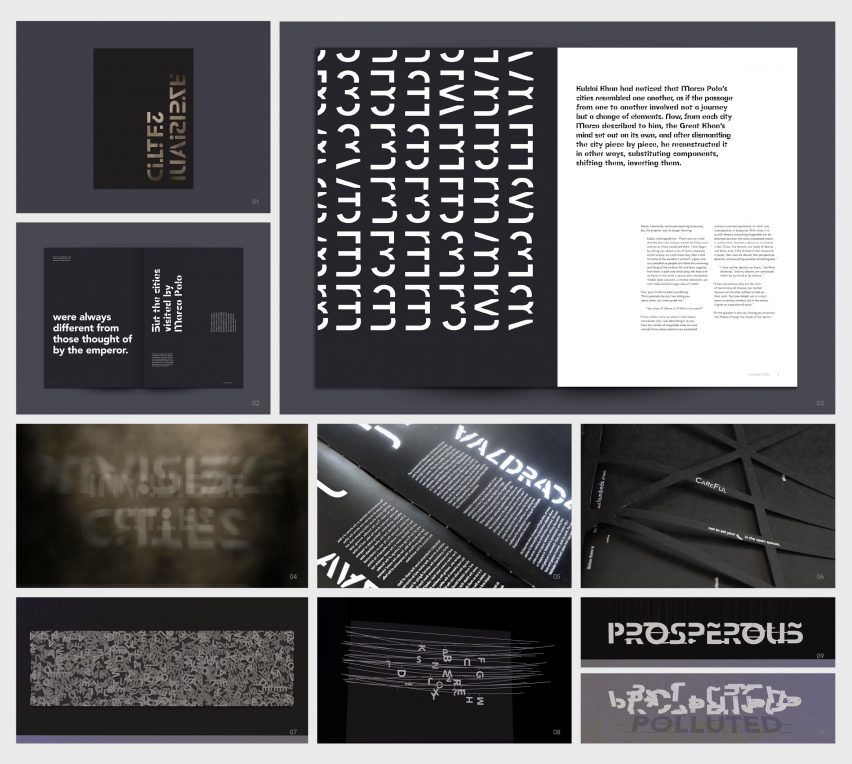
Invisible Cities by Michael Smith
"The brief asked for a new edition of Italo Calvino's book, Invisible Cities, to be designed and feature unconventional typography to radically depict the abstract concepts and stories within the text.
"Focusing on the idea of perception and truth, the Invisible Cities Exhibition project aims to address how people's perceptions can be misleading to create false senses of reality. The exhibition catalogue uses EcoStar paper stock made from 100 per cent recycled waste and is produced as carbon neutral.
"The jurors commented that Smith takes on a highly organised, client and research-focused process, constantly addressing the client's needs and the desired outcomes.
"A technical briefing process, including research into similar projects, visual references and mood boards, supports Smith's approach, allowing the designer to piece together rough designs to propose two to three concepts to the client.
"Smith wants to apply his work practices and design expertise to support industries that positively impact the world, including the health sector, education and environmental industries."
Student: Michael Smith
Award: Australian Visual Communications Graduate of the Year
Course: Bachelor of Design (Communication Design) Honours at Swinburne University of Technology
Tutor: Anthony Elliott
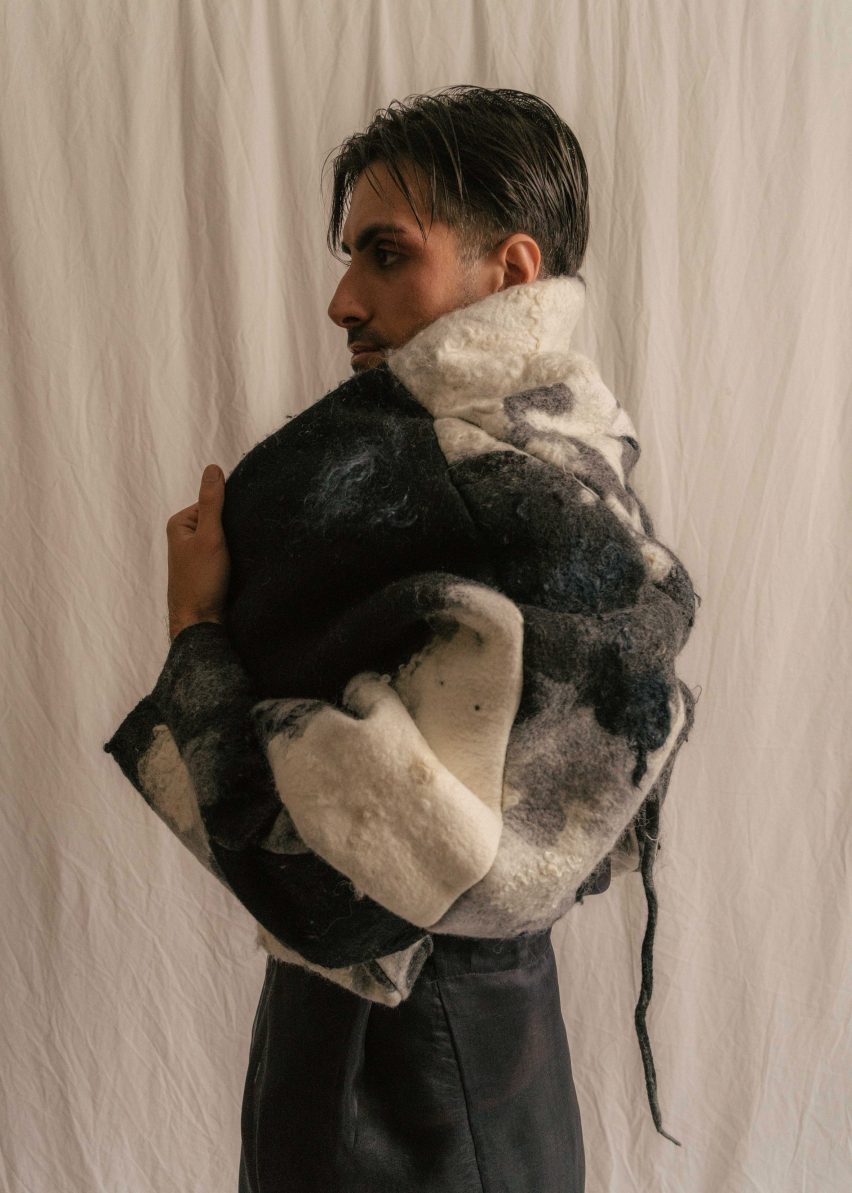
Heir by Maddison Robinson
"Heir seeks to investigate the emotional attachment between garments and individuals and how lived experiences and sentimental value can contribute to personal attachment and participate in the development of self-identities.
"Based on the paradox of Theseus ship, the collection questions if garments that have been repaired or reconstructed over time can still be regarded as the same. This change question explores the ideology of sentiment and how garments that change, mend and alter over time can pass through generations.
"A garment no longer relies on its physical permanence to transit over time but rather prolongs and perpetuates its emotional and psychological permanence.
"The jurors commented how Robinson's methodology is heavily material and process-focused. She strives to create garments that celebrate the complexions of natural materials and appreciates slow and hand-crafted techniques.
"Sustainability is a fundamental factor in how garments are designed, with a motivation to be more thoughtful and intentional in what is crafted. The focus on bespoke and considered re-design of pre-existing garments and materials are at the centre."
Student: Maddison Robinson
Award: Australian Fashion Graduate of the Year
Course: Bachelor of Fashion Design (Honours), Fashion Apparel Design at University of Technology Sydney
Tutor: Timo Rissanen
Email: maddison.robinson7[at]gmail.com
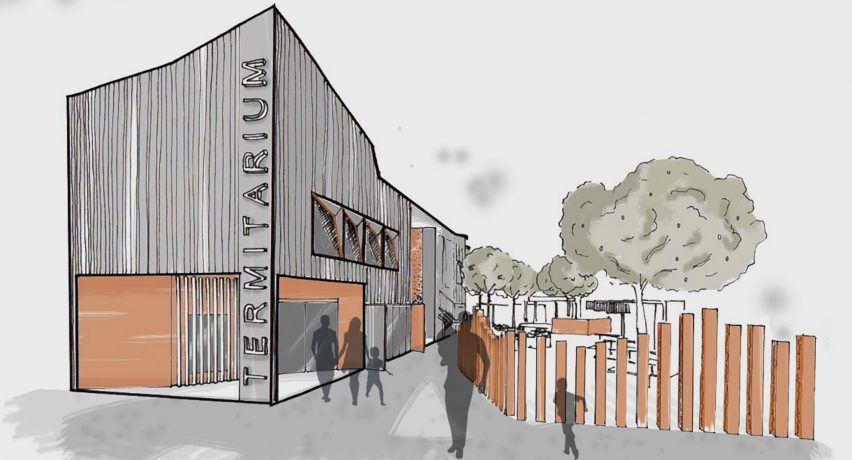
The Termitarium, Community Kitchen and Hub by Kirsteen James
"Essential values of a community hub were identified in this the Termitarium. Inspired by the topography and Indigenous lore of the Glass House Mountains, parallels were drawn to the architecture and collaborative community character of the termite society.
"The Glass House Mountains, a place of significant ancient gathering for the local Indigenous peoples, reveal beautiful and unique geological structures and speak to the importance of community care, kindness and cohesion.
"Diversity, collaboration and exchange are at the centre of James's designs. Her work methodology always starts with curiosity and research.
"By defining and framing the feasible opportunities, James works through experimenting, sketching, testing and pushing the boundaries. Throughout the process, she will often prototype, create and discuss ideas with peers and clients.
"James's ultimate goal is to develop contextually and culturally sensitive methods while striving to improve the lives of others for a wholly inclusive experience. She aspires to do this through sustainable practices that consider a more organic approach to resource utilisation."
Student: Kirsteen James
Awards: Australian Interior Graduate of the Year and Madeline Lester Award Recipient
Course: Bachelor of Design (Interior Architecture) at Queensland University of Technology
Tutor: Lynda Fischer
Email: kirsteeneljames[at]yahoo.com
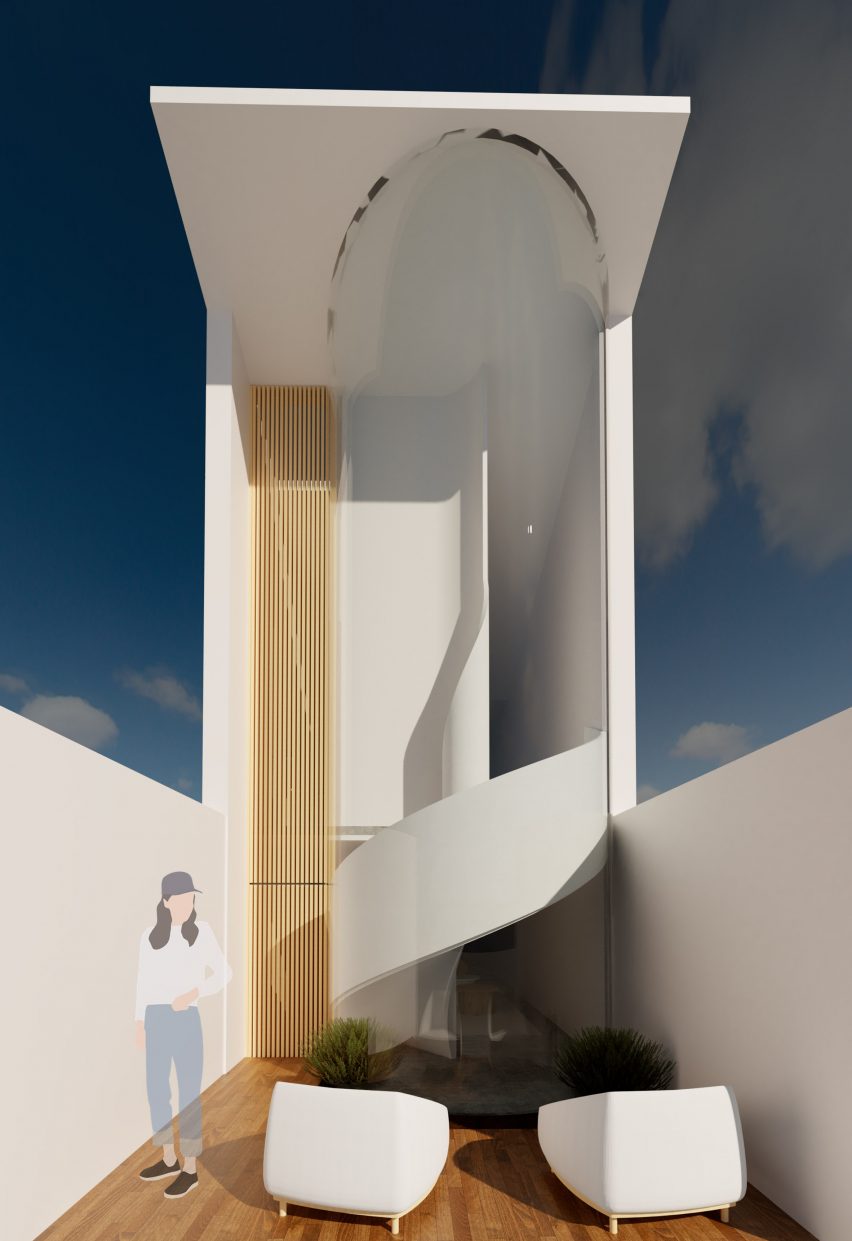
The Tiny House by Lauren Coleman
"The Tiny House playfully defies expectations. Derived from the children's game of hide-and-seek, a sense of curiosity and playfulness is established that can catch somebody by surprise.
"Sustainability was taken into account when specifying furniture and materials. Recycled timber is a prominent feature of the house and the polished concrete flooring is made from waste by-products.
"Chosen furniture was sourced from Australian furniture stores such as Jardan and Mubu. Both these companies feature sustainably-sourced timber for their furniture and other aspects such as biodegradable and zero waste packaging.
"Coleman was selected for an award because of her exemplary visual communication skills, attention to decorative detail and innovative conceptual approach. She applies herself to projects with a focused commitment to consistently producing work of the highest quality.
"Coleman's biggest motivation is being able to affect the lives of others through quality design, inspired not only by the physical aspects of a space but the impact on the human mind and wellbeing. The designer creates inclusive environments where people thrive."
Student: Lauren Coleman
Award: Australian Interior Decoration Graduate of the Year
Course: Diploma of Interior Design at TAFE NSW Design Centre Enmore
Tutor: Tanya Dobble
Email: laurenec137[at]gmail.com
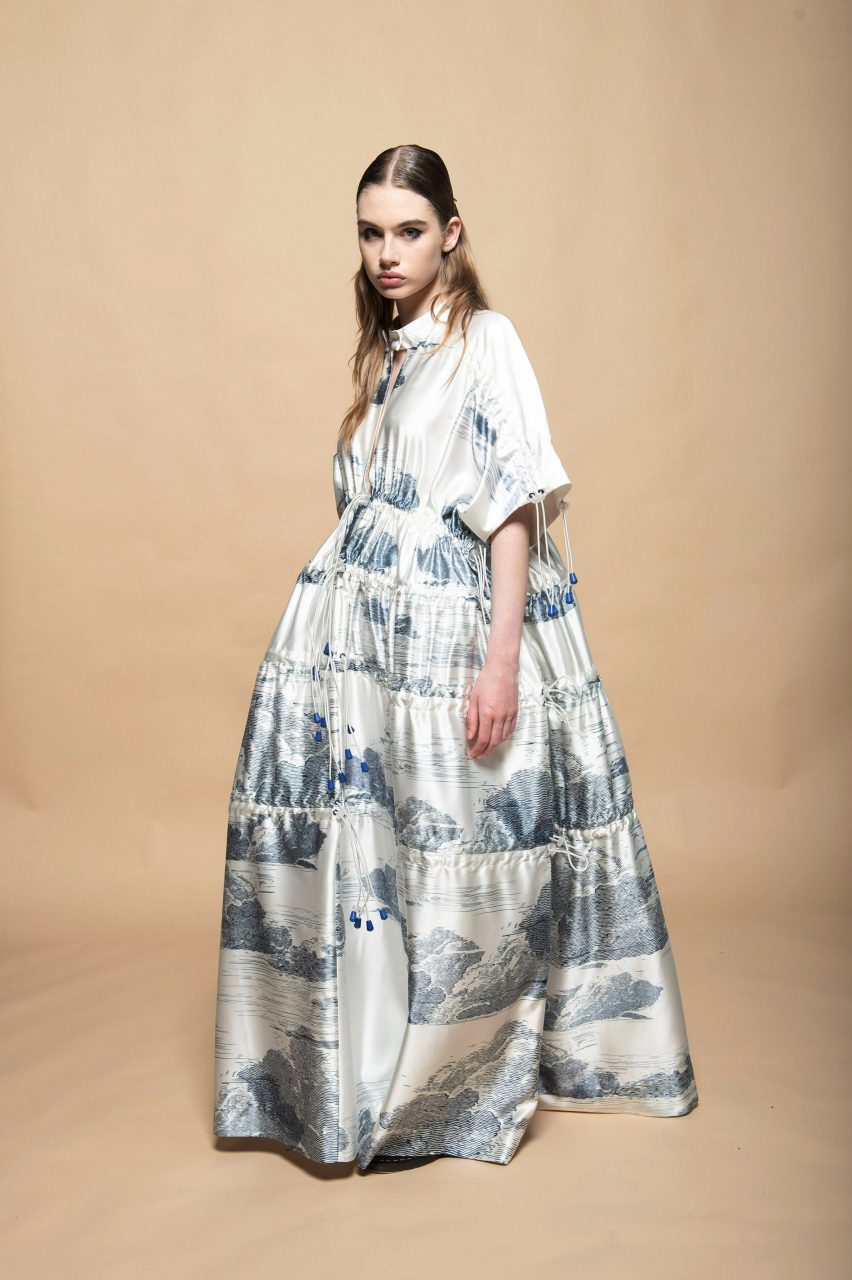
Skyfox by Emma Daley
"The Skyfox collection expresses the natural wonder of the sky and depicts a sense of dreaming, wondering and imagining. Interpreted with whimsical, hand-drawn line work digitally printed onto satin, Skyfox expertly combines gentle artisan techniques with new technology.
"The jurors commented how Daley experiments with different mediums and fabrications and has shown an excellent standard of textile design, especially layered, with large-scale screenprints.
"The draping process driving Daley's design process is diverse and uses specialised fabrics and textile manipulation.
"Through colour and texture, her graduate collection communicates an emotional response to different times of the day. An overcast sky is satin and digitally printed tulle, appearing soft and subdued, and a cloud full of water is a weighted crepe de chine, heavy and dense.
"Her design process incorporates hand-manipulated textile techniques, such as weaving and embroidery, with digitising the motifs to create different scales and repeats."
Student: Emma Daley
Award: Australian Textile Design Graduate of the Year
Course: Advanced Diploma of Applied Fashion Design and Merchandising at North Metropolitan TAFE
Tutor: Anna Kotai
Email: es.daley94[at]gmail.com
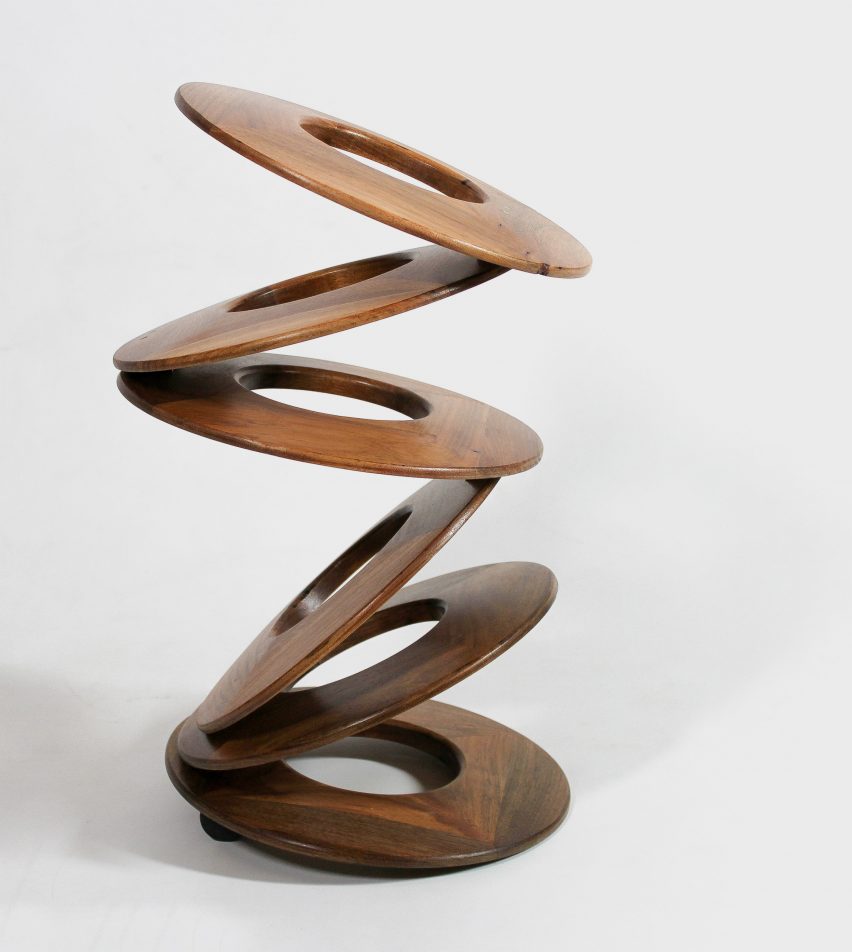
Bronchi by Alexei Todd
"Bronchi blackwood umbrella stand is a study of Australian timber and an exploration of new and old making techniques. The focus was to create an artefact that utilised wood as the sole material while subverting traditional methods to create something distinctive.
"The jurors noted that Todd's work and creative thought were outstanding, with an excellent grasp of the technical and construction methods needed to produce cutting-edge ideas that challenged the understanding of furniture.
"Todd strives to establish and encourage interaction between the product and user and is known to create broad and unique furniture and product design. Beyond the constraints of working with specific materials and styles, the designer creates work that reflects his taste.
"His design philosophy is non-conformist while aiming to reflect the needs and wants of the upper middle target market. Additionally, he adopts materials and practices that reflect that sustainable design is critical to his ethos.
"The way users interact with objects is a fundamental pillar and his designs foster personal connections and build narratives with clients."
Student: Alexei Todd
Award: Australian Furniture Design Graduate of the Year
Course: Associate Degree in Design (Furniture) at RMIT University
Tutor: Julian Pratt
Email: alexei.todd[at]gmail.com
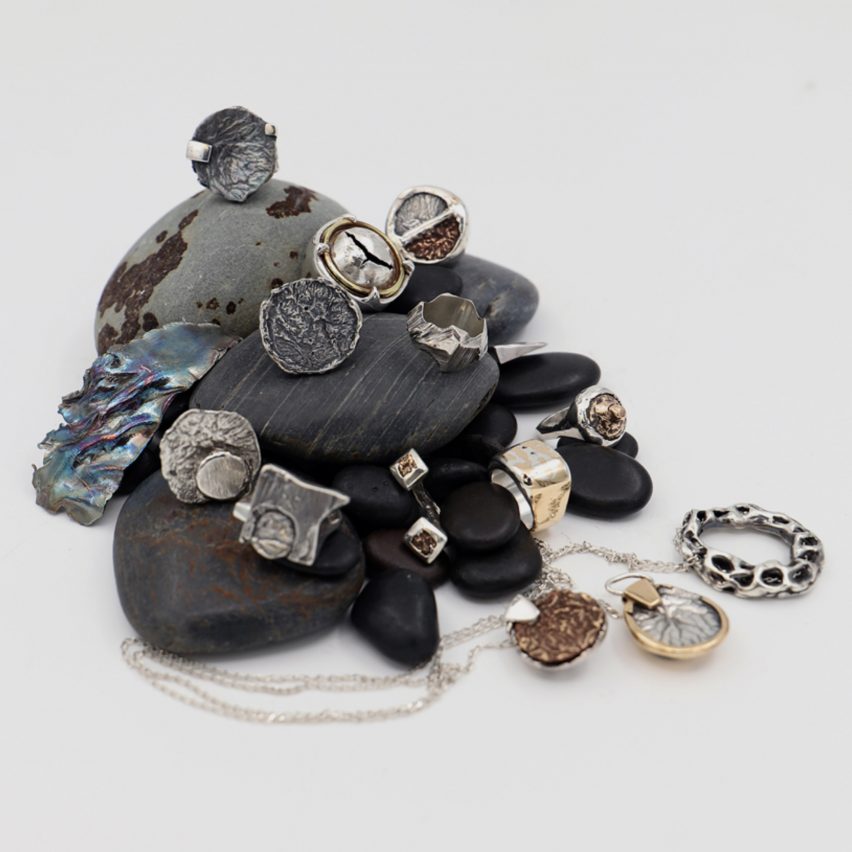
In-Tension by Lorissa Toweel
"In-tension is a collection of silver, brass and bronze works that interrogate the interplay between the incidental and the intended. The series explores a unique and intimate relationship between material and maker. In this way, the artefact is resultant and entirely secondary.
"As with most process-driven practices, the maker is guided by the materials and their inherent qualities. The material is afforded agency and, in return, provides a liveliness unique to the incidental.
"Toweel's work represents her vision and the collaboration between material and maker. Pieces are reimagined and fashioned into wearable objects where flexibility, brittleness and fluidity are honoured in each casting.
"Toweel's design approach represents a unique and open attitude towards sustainability and collaboration. By embracing fluidity, she has discovered new approaches to design.
"Toweel worked with two methods: Fabrication and Lost-wax Casting. Fabricated elements are crafted using sheet metal, wire, and smithing techniques like cold-joining and soldering. In principle, lost-wax casting begins with fashioning paraffin wax into a master form. This form creates a mould into which molten metal is poured."
Student: Lorissa Toweel
Award: Australian Jewellery Design Graduate of the Year
Course: Bachelor of Fine Art at Queensland College of Art Griffith University
Tutor: Elizabeth Shaw
Email: lorissa.toweel[at]gmail.com

Pengum by Dorcas Chu
"Chewing gum is the second most littered item in the world, and 80 to 90 per cent of chewing gum is not disposed of properly.
"Pengum is a reusable chewing gum container for anyone who enjoys chewing and fidgeting. It can keep your breath fresh, reduce feelings of anxiety and boost concentration while making it fun to properly dispose of used chewing gum.
"Chu enjoys rigorous design research using IDEO methods, as it brings many insights into a process and leads to more user-centric product outcomes. Sketching, sketch modelling and CAD are used to refine product ideas.
"The jurors commented how Chu designs beautiful, meaningful, sustainable, and high-quality products and hopes to promote the value of industrial design to industries and younger generations.
"She aspires to see a world where well-designed products provide improved safety, health and quality of life for people of all ages, genders and ethnicities."
Student: Dorcas Chu
Award: Australian Industrial Product Design Graduate of the Year
Course: Bachelor of Industrial Design at University of New South Wales
Tutor: Mariano Ramirez
Email: dorcas.chu[at]student.unsw.edu.au
Partnership content
This school show is a partnership between Dezeen and the Design Institute of Australia. Find out more about Dezeen partnership content here.